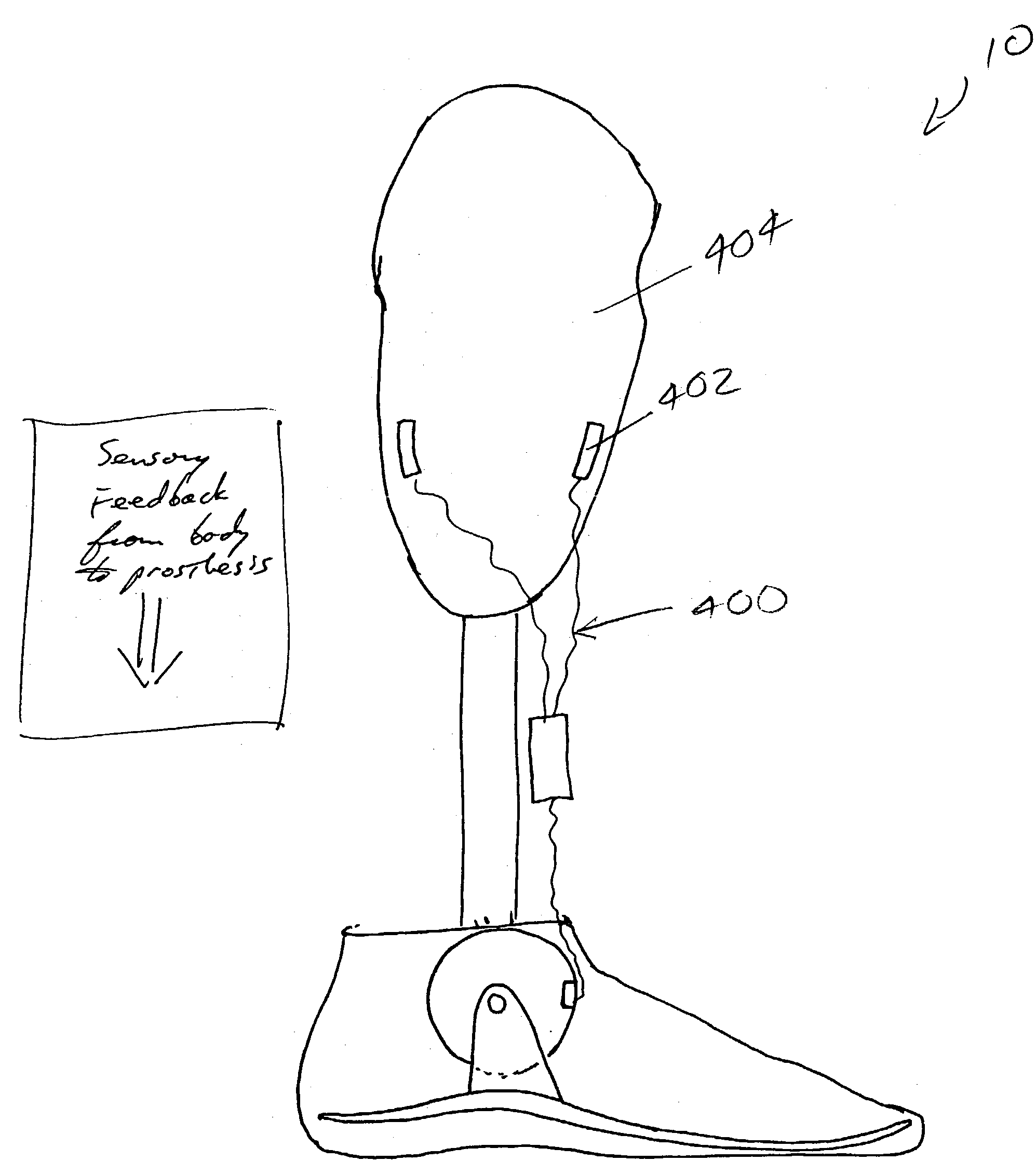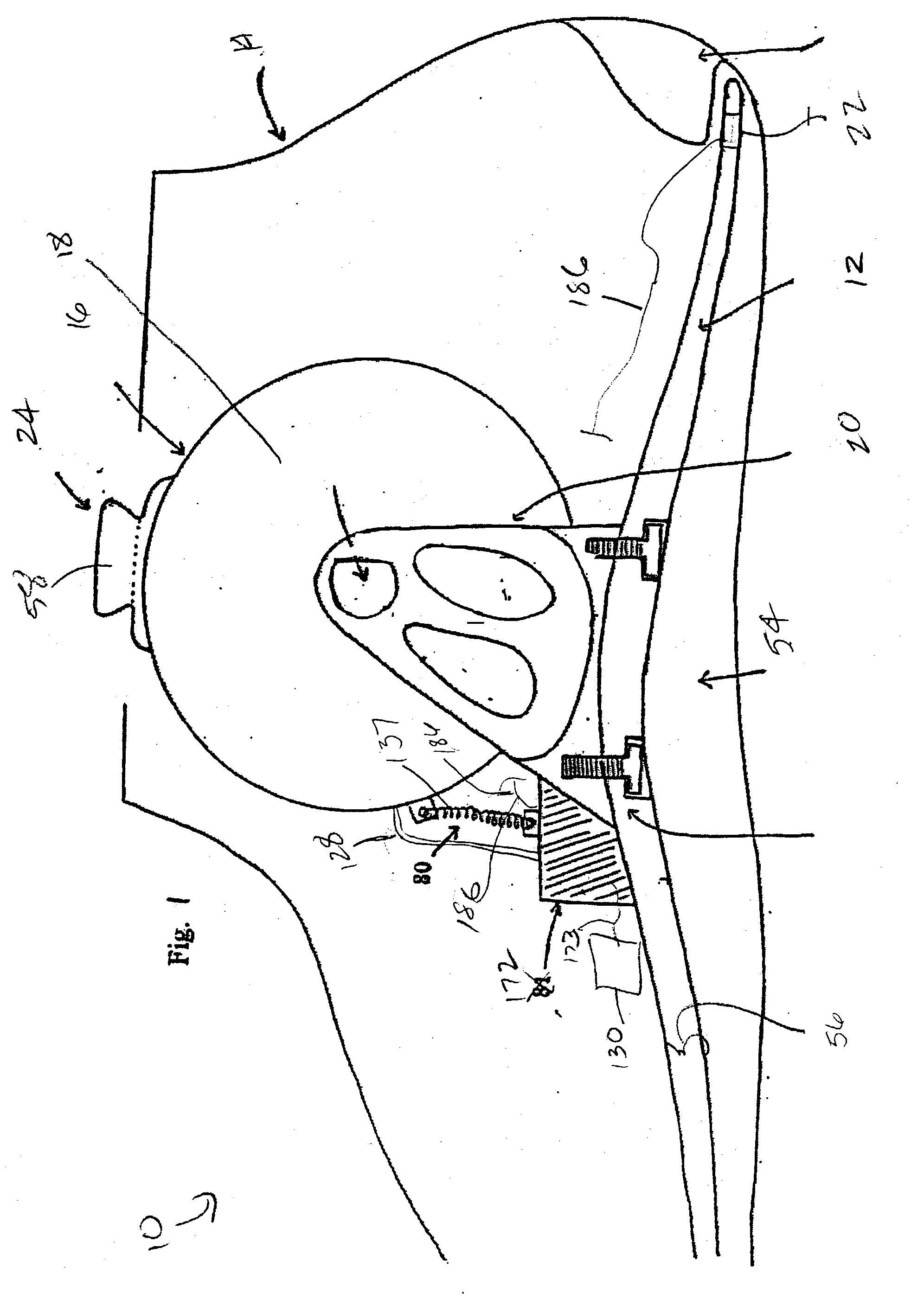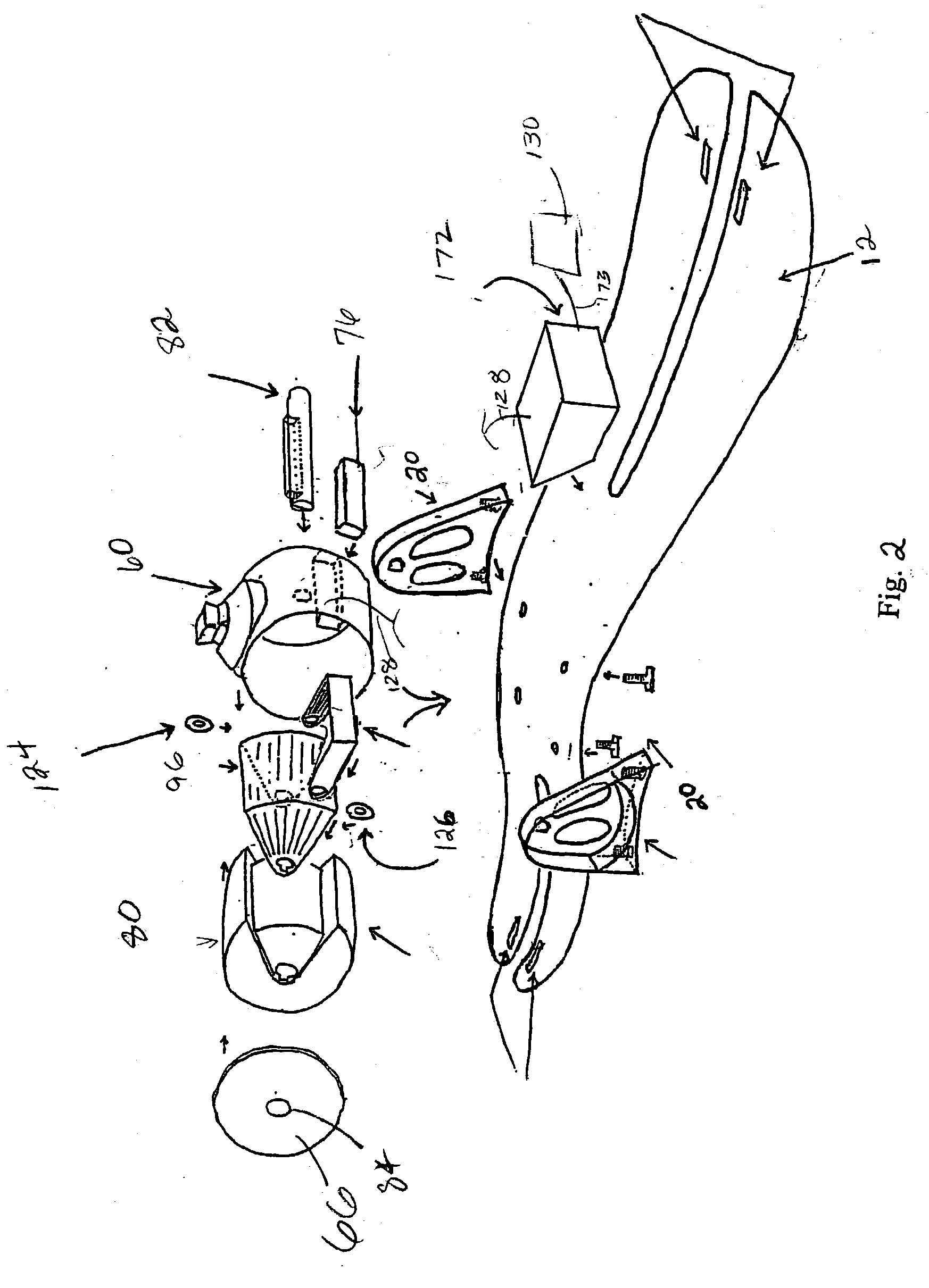Electronically controlled prosthetic system
a prosthetic foot and electric motor technology, applied in the field of electric motor controlled prosthetic feet, can solve the problems of insufficient prior art on numerous levels, current mechanically designed prosthetic feet do not allow significant alterations in gait speed without losing optimal biomechanical characteristics
- Summary
- Abstract
- Description
- Claims
- Application Information
AI Technical Summary
Problems solved by technology
Method used
Image
Examples
Embodiment Construction
[0189] Additionally, it is contemplated that invention 10 may be used in conjunction with myoelectric muscle contacts on the residual limb 404 for trans-tibial amputees and may provide greater control in ambulation. By example, at heel strike, tibialis anterior contraction may be used to determine the level of damper resistance of MR fluid 94 preventing or reducing too fast or too much plantarflexion. Also, increased gastrocnemeous contraction during midstance may initiate dorsiflexion resistance sooner to allow keel 12 to remain in increased plantarflexion from midstance to toe off, therefore increasing push off may be utilized in fast walking or running.
[0190] Furthermore, invention 10 maybe used in conjunction with an orthotic device for a user who has lost the ability to actively plantarflex and / or dorsiflex their natural foot. It is contemplated that invention 10 dampening system 18, sensor system 22, microprocessor unit 172 and / or other elements or combinations thereof device ...
PUM
 Login to View More
Login to View More Abstract
Description
Claims
Application Information
 Login to View More
Login to View More - R&D
- Intellectual Property
- Life Sciences
- Materials
- Tech Scout
- Unparalleled Data Quality
- Higher Quality Content
- 60% Fewer Hallucinations
Browse by: Latest US Patents, China's latest patents, Technical Efficacy Thesaurus, Application Domain, Technology Topic, Popular Technical Reports.
© 2025 PatSnap. All rights reserved.Legal|Privacy policy|Modern Slavery Act Transparency Statement|Sitemap|About US| Contact US: help@patsnap.com



